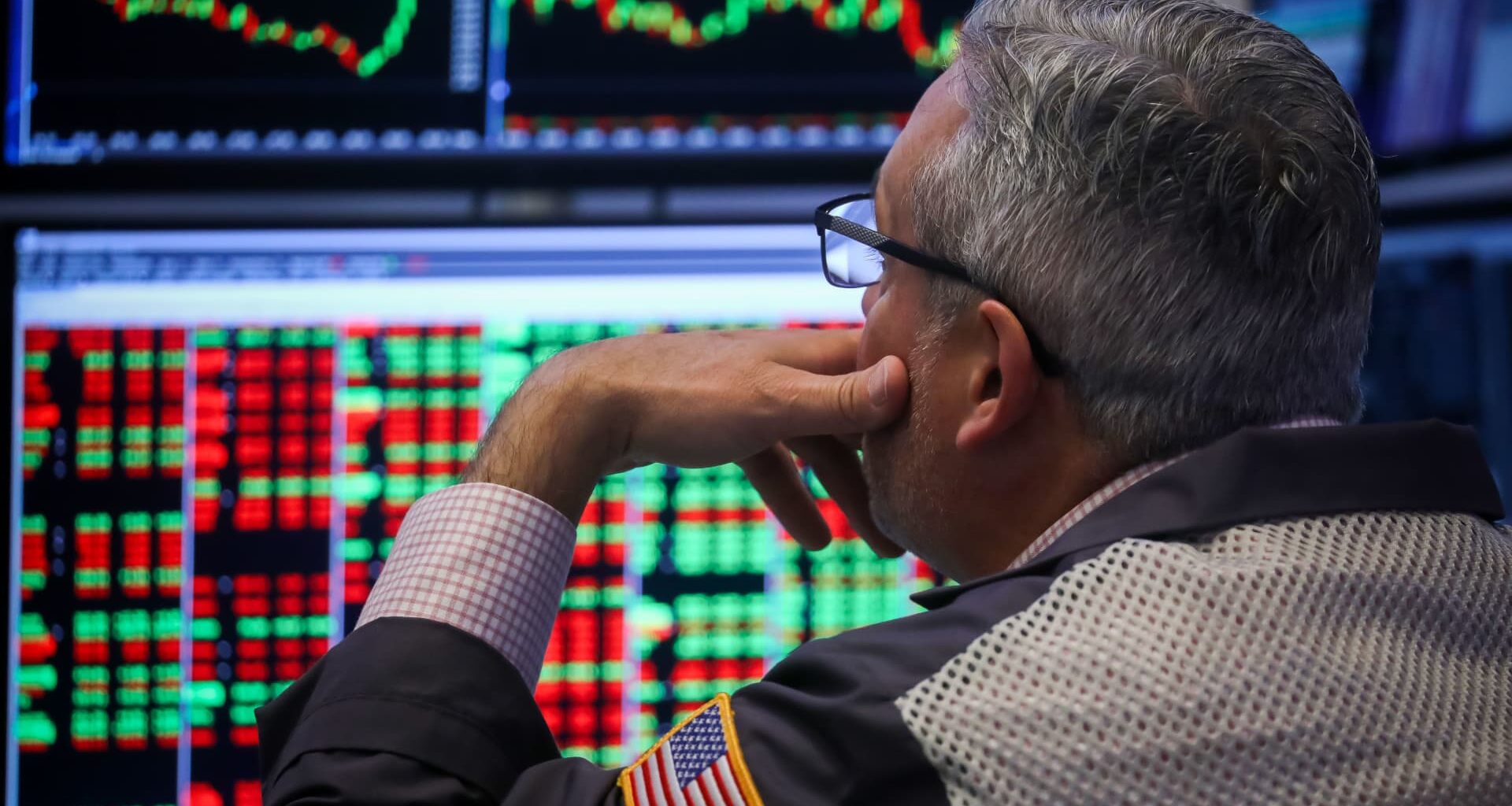A trader works during the Evommune Inc. initial public offering (IPO) at the New York Stock Exchange (NYSE) in New York, US, on Thursday, Nov. 6, 2025.
Michael Nagle| Bloomberg | Getty Images
Stock futures moved slightly higher Thursday night after a pullback in the market’s biggest technology names led to a losing session for U.S. equities.
Futures tied to the Dow Jones Industrial Average added 95 points, or about 0.2%. S&P futures and Nasdaq 100 futures each rose about 0.3%.
Key artificial intelligence leaders lost steam on Thursday, with names such as Nvidia, Advanced Micro Devices, Tesla and Microsoft posting significant declines that weighed on the broader market. The drop in stocks was also exacerbated by data reflecting job cuts for October hit the highest level for the month in more than two decades, making 2025 the worst year for layoffs since 2009.
Major U.S. stock averages closed lower across the board in the previous session, with the tech-heavy Nasdaq Composite notably dropping 1.9% and the 30-stock Dow closing lower by almost 400 points.
The three benchmark indices are each in the red this week, with losses accumulating on-and-off since Tuesday when major AI names declined on fears about elevated tech sector valuations — which have also contributed to a highly concentrated market. The S&P 500 is down 1.8% week to date, while the 30-stock Dow Jones Industrial Average and Nasdaq have lost nearly 1.4% and 2.8% during the period, respectively.
To be sure, some market participants remain hopeful that an end to the lengthy U.S. government shutdown and a potential December interest rate cut from the Federal Reserve could alleviate the pain in U.S. stocks. Investors are also monitoring the Supreme Court’s skepticism about the legality of President Donald Trump’s far-reaching tariffs and how third-quarter corporate earnings results are progressing.
“There’s still hope for a year-end rally once the government shutdown ends and the tariff situation is resolved. We are still two weeks from the very important Nvidia earnings, and strength there might be the catalyst to reaffirm the AI narrative. If that is followed by a December Fed cut, we may still go out on a high at year’s end,” Louis Navellier, founder and chief investment officer at Navellier & Associates, said. “Corrections with these levels of gains are normal and to be expected, not something to panic over.”
The Bureau of Labor Statistics normally would release the nonfarm payrolls report Friday. For the second month in a row, however, it is unable to do so due to the government shutdown. Economists surveyed by Dow Jones had been expecting the report to show a decline of 60,000 jobs and an increase in the unemployment rate to 4.5%.

